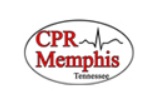How to Identify Enterobacter aerogenes | Microbiology Unknown Report
Call Us Now
Get the Best CPR Class in Memphis Today!
UNKNOWN LAB REPORT
Mandakini Patel
12/03/2013
Microbiology Fall 2013
INTRODUCTION
Call Us Now
Get the Best CPR Class in Memphis Today!
There are many practical and theoretical applications for identifying unknown bacteria. It is very important for the physicians to know what bacteria cause diseases so that they are able to prescribe a narrow spectrum antibiotic, rather than prescribing a broad spectrum antibiotic. Sometimes trying to figure out the identity of an unknown bacterium, can also led to discovery of new species, for example, if test are performed to identify the bacterium, and the bacterium does not match any previous single species test, then it is possible that a new species has been discovered. Identification of an unknown bacterium plays an important role in medical laboratories, in order to figure out the pathogenic bacteria, and also the structure of a bacterium plays a role because specific antibiotics target specific structures of the bacteria in order to destroy it, by using a specific antibiotic.
MATERIALS AND METHODS:
An unknown sample labeled as #120 was given to me by my lab instructor. In order to find my unknown microbes I followed the procedures listed in the laboratory manual by McDonald et.al, unless otherwise noted, the procedures followed are as follows: –
The first procedure carried out was the isolation of the unknown mixtures by carrying out the quadrant steak procedure on an agar medium. Then it was incubated at 37 degree Celsius for 2 days, the result obtained was colonies grown of one kind only, when gram stained found out to be pink color rod shaped microbes, this proofed that it was a gram negative bacteria, but failed to obtain the gram positive colonies to grow on the agar plate. Once the gram negative was obtained, the original sample was re-streaked on agar plate to completely isolate it, once isolated the following test were carried out, to find the gram negative bacteria.
In order for the gram positive bacteria to grow, original sample was streaked on a mannitol salt agar plate, because it favors the growth of gram positive bacteria, once found the bacteria to grow, isolated it and grew it on agar plate for more growth and to find out what bacteria it is, the following test were performed.
Table 1: test performed to find out what gram negative bacteria is it, by following the procedures.
- Gram stain
- Nitrate test
- Simmons citrate test
- Urea test
- Methyl red test
- Voges-proskauer test
- Kligler test (to test for H2S production)
- Glucose, maltose, lactose and mannitol test (test for acid production)
Table 2: test performed to find out what gram positive bacteria is it, by following procedures.
- Gram stain
- Simmons citrate test
- Methyl red test
- Voges-proskauer test
- Nitrate test
- Urea test
- Maltose, glucose, lactose and mannitol test (test for acid production)
RESULTS:
Unknown sample #120 had the following morphology on an agar plate: medium irregular sized white colored colonies and the morphology of the sample on the mannitol salt agar plate had: small opaque cream colored colonies. Then carried out the following tests, tables 1 and 2 list all the biochemical test performed, their purpose and result. And the results are also shown on the flow charts.
Table 1: test for gram negative bacteria
|
Test |
Purpose |
Reagents |
Observations |
Results |
| Gram stain | To determine the gram reaction of the unknown bacteria isolated | Crystal violet, iodine, alcohol, |
safraninPink rod shaped bacteria’s foundGram negative rodsNitrate testTo test for nitrate reductases that anaerobically reduce nitrate.-Reagents A and B
-add zinc if no color appears-appearance of red color indicates the reduction of nitrates to nitrites.
– if red color appears after adding zinc, negative test.-positive test for gram negative bacteria for my unknown.Simmons citrate test( citrate slant)Differentiates microbes based on their ability to use citrate as their sole source of carbon37 degree CelsiusGreen color changes to bluePositive citrate permease testUrea testDetects the enzyme urease, which breaks down urea, producing an alkaline pHPhenol red the pH indicatorDidn’t Turn broth deep pink/redNegative urease testMethyl red testTo test for the microbes producing a mixture of acids as a result of glucose fermentationMethyl red indicatorBroth turns red when pH indicator addedNegative test for mixed acid production.Voges-Proskauer testDetects for organisms whose acid produced from glucose fermentation is quickly converted to acetoin.V-P reagents A and BRed color after addition indicates positive testPositive V-P test obtained.Kligler testPerformed in order to test for H2S productionIncubate at 37 degree CelsiusBlack precipitate found if thiosulfate is reduced to hydrogen sulfideNo black precipitate formed negative testMaltose, lactose, glucose, mannitol testTest performed in order to check if the microbe produces acid as their byproductInoculate the bacteria and incubate at 37 degree CelsiusColor change from red to yellowThe bacteria test positive for acid production
Table 2: test for gram positive bacteria
|
TEST |
PURPOSE |
REAGENTS |
OBSERVATIONS |
RESULTS |
| Gram test | To determine the gram reaction of the bacterium | Crystal violet, iodine, alcohol, safranin |
Blue cocciGram positive cocciSimmons testDifferentiate microbes based upon their ability to use citrate as their sole source of carbon.37 degree CelsiusGreen color of the tube didn’t change the colorNegative test for citrate permeaseMethyl testTo test for the microbes producing a mixture of acids as a result of glucose fermentationMethyl red indicatorBroth changed to red colorPositive test for mixture of acidsVoges-Proskauer testDetects for organisms whose acid produced from glucose fermentation is quickly converted to acetoin.V-P reagents A and BRed color appears after the addition of reagentPositive test for acetoinNitrate testTo test for nitrate reductases that anaerobically reduce nitrate.Reagents A and B
-add zinc if no color appears.No color appeared after the reagents were added. But red color appeared after adding zincNegative test fpr the reduction of nitratesUrea testDetects the enzyme urease, which breaks down urea, producing an alkaline pHPhenol red the pH indicatorNo color change to red/pinkNegative test for ureaseMaltose, lactose, glucose, mannitol testTest performed in order to check if the microbe produces acid as their byproductInoculate the bacteria and incubate at 37 degree CelsiusColor change from red to yellowThe bacteria test positive for acid production.
UNKNOWN #120
Gram stain
Gram negative rod (pink color)
Simmons citrate test
Positive Negative
Klebsiella pneumonia -Escherichia coli
-Enterobacter aerogenes -Proteus vulgaris
-Pseudomonas aeruginosa -Staphylococcus aureus
–Bacillus cereus -Staphylococcus epidermidis
-Bacillus subtilis -Enterococcus faecalis
↓
Eosin-methylene blue test
(Pinkish-purple colonies)
Positive Negative
– Klebsiella pneumonia -Bacillus cereus
-Enterobacter aerogenes -Bacillus subtilis
-Pseudomonas aeruginosa
VP test
(Positive)
Positive Negative
– Klebsiella pneumonia -Pseudomonas aeruginosa
-Enterobacter aerogenes
Urea test
(negative)
-Enterobacter aerogenes
MR test
(negative)
-Enterobacter aerogenes
Gram negative bacterium – Enterobacter aerogenes
Flowchart
Unknown #120
Gram stain
Gram positive cocci (purple color)
Simmons citrate test
Positive Negative
-Klebsiella pneumonia -Escherichia coli
-Enterobacter aerogenes -Proteus vulgaris
-Pseudomonas aeruginosa -Staphylococcus aureus
– Bacillus cereus -Staphylococcus epidermidis
-Bacillus subtilis -Enterococcus faecalis
VP TEST
Positive Negative
-Staphylococcus aureus -Escherichia coli
-Staphylococcus epidermidis -Proteus vulgaris
-Enterococcus faecalis
Urea test
(negative)
– Enterococcus faecalis
Nitrate test
(negative)
– Enterococcus faecalis
Unknown #120
Gram positive bacterium
– Enterococcus faecalis
DISCUSSION/CONCLUSION:
The first isolation carried out by streak method only presented one type of bacterial growth, and after gram staining it, it was concluded that it was gram negative bacteria. The gram negative obtained was then re-isolated on a new agar media, once growth obtained it was gram stained to double check whether it was gram negative, and the result obtained was positive, pink colored and rod shaped bacteria. The original sample was streaked again in order to obtain unknown gram positive bacteria, but the result obtained was negative, the result had a mixture of both positive and negative, so the original sample was streaked in order to isolate the gram positive but failed to obtain gram positive by itself. so then the original sample was streaked on a mannitol salt agar plate, because the high salt concentration favors the growth of gram positive bacteria, once growth obtained after incubation, gram staining was done and obtained round blue colored cocci.
In order to double check the results, the growth obtained was re-isolated from mannitol salt agar plate and were grown them on agar plate, once the growth was obtained, gram staining was done again and the result was positive that they were gram positive blue colored cocci. This is how I got my two pure isolated colonies of gram positive and gram negative. Then the next steps followed were to find out, what kind of gram positive and gram negative are they based on the chart provided by the instructor. The test procedures were followed from the lab manual to find out the gram negative bacterium first, and incubated the test carried out at 37 degree Celsius. The result were as shown in the flow chart as well in the table, the determining step to figure out that it was gram negative was the urea and the MR test, which conformed that my gram negative bacteria was Enterobacter aerogenes. Then it was confirmed by the instructor that it was the right gram negative found.
Then the tests were carried out to figure out the gram positive bacteria as shown in the flowchart and the table. And the rate determining test for gram positive was urea and the nitrate test which gave negative results and conformed that the unknown gram positive bacteria was Enterococcus faecalis. This was too conformed by the instructor that it was the right bacteria found. This is how the unknown sample given were found out, both gram positive and gram negative bacteria, it was a lot of work but It was interesting and I learned a lot, and I enjoyed the process of finding my unknown bacteria’s.
Enterobacter aerogenes is a gram negative rod shaped bacteria. It is a nosocomial and a pathogenic bacterium that causes most of the opportunistic infections. The majority of the E.aerogenes is sensitive to most of the antibiotics designed for this bacteria class, but this is complicated by their inducible resistance mechanisms, particularly lactamase which means that they quickly become resistant to standard antibiotics during treatment, requiring change in antibiotic to avoid worsening of the sepsis. E.aerogenes is generally found in the human gastrointestinal tract and does not generally cause disease in healthy individuals. It has been found to live in various wastes, soil, water, dairy products and hygienic chemicals. It is a frequent cause of infections in immunocompromised individuals, low birth weight and premature babies, and those with serious underlying health conditions.
Prevention and control: the options to control the E.aerogenes are extremely limited as most infection arises from an endogenous source and many strains are now highly antibiotic resistant. Important practices such as hand-hygiene, environmental decontamination, hospital surveillance of antibiotic resistance, controlled use of antibiotics and aseptic insertion of catheters and implanted devices will reduce transmission of the organism.
Refrences:-
- Mcdonald, Virginia, Mary Thoele, Bill Salsgiver and Susie Gero. Lab manual for general microbiology.
- http://eol.org/pages/972692/details
- Bioquell: http://www.bioquell.com/technology/microbiology/enterobacter-aerogenes/









